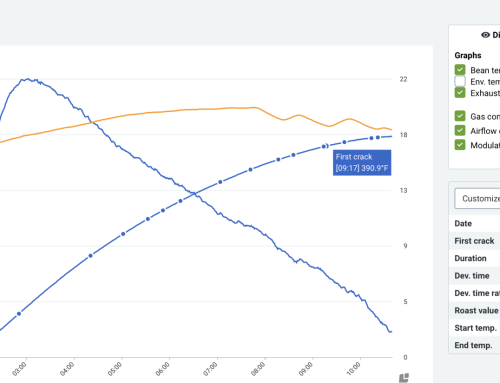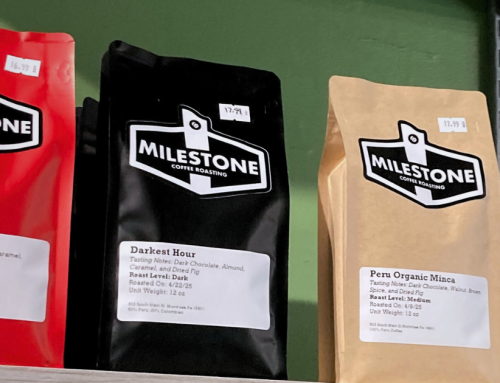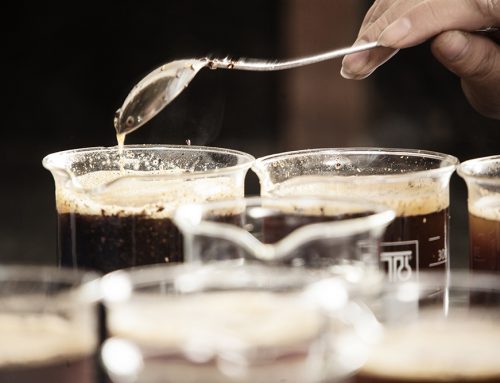This blog delves into the nuances of the flavor wheel. It explores its history, structure, and how it enhances the coffee tasting experience.

SCA Flavor Wheel Detail
What is the SCA Coffee Flavor Wheel?

Costa Rica Quality Control lab – table set for coffee cupping
A brief history of the flavor wheel
The first sub-wheel of the flavor wheel listed defects, while the second listed desirable attributes. Many terms were technical and obscure, like “carvacrol” and “cineolic.” Common flavors like strawberry and blueberry were absent. By 2010, the specialty coffee industry had evolved significantly. And this evolution necessitated a reinvention of the flavor wheel.

Assorted Chocolates by Anna Subbotina
How was the new SCA Coffee Taster’s Flavor Wheel developed?
In 2016, the SCA launched an all-new Coffee Flavor Wheel. The update was the result of a collaboration between SCA and World Coffee Research. At its foundation is the Sensory Lexicon. The lexicon was a meticulously researched collection of taste, aroma, and texture descriptors found in coffee.
The Sensory Lexicon was developed by the Sensory Analysis Center at Kansas State University. They collaborated with professional sensory panelists, researchers, and coffee industry veterans. Together, they evaluated coffee samples for aroma, flavor, aftertaste, texture, and amplitude. Panelists spent over 100 hours evaluating 105 coffee samples from 13 countries. They determined 110 attributes included in the first iteration of the lexicon.
The lexicon also includes methods to replicate specific tastes, aromas, and textures. This helps align sensory experiences around the world. For example, the “strawberry” flavor corresponds to frozen Dole Whole Strawberries, thawed and served at room temperature. At UC Davis, 72 professionals organized the lexicon into clusters based on sensory and statistical research. Finally, the iconic flavor wheel graphic was created by One Darnley Road, a UK-based creative agency.

Assorted Nuts by DAPA Images
Who is the SCA Coffee Flavor Wheel for?
The flavor wheel is a useful tool for anyone who is tasting coffee and wants to identify the flavors they detect in the cup profile. This includes home brewers, baristas, coffee roasters, quality control professionals, Q-graders, importers, exporters, researchers, and anyone interested in exploring the potential of flavor in coffee.
The flavor wheel is particularly useful for people within a community who want to speak the same language when it comes to describing coffee, where calibration and alignment is essential, such as in research labs or judged competitions.

Fresh berries by Anastasia Collection
How to use the Coffee Flavor wheel?
To use the flavor wheel, take a sip of coffee and evaluate the flavor by starting at the center of the wheel with general taste descriptors like “sweet,” “fruity,” or “spices.” From there, move outward to more specific flavors. For example, if you identify a coffee as fruity, you can narrow it down to “berry,” and then to “blackberry” or “strawberry” depending on what you taste.
The SCA Coffee Taster’s Flavor Wheel can also be used in conjunction with the World Coffee Research Sensory Lexicon. A resource like this interactive Flavor Wheel developed by Not Bad Coffee bring both the SCA Flavor Wheel and the WCR Sensory Lexicon together in a handy web-based tool.
It’s important to note that the wheel is a descriptive tool rather than a quality assessment; its purpose is to help users articulate the flavors they detect in coffee without making value judgments.

Quality Control lab in Kenya setting up a table of coffees to be cupped & evaluated
Why is the SCA Coffee Flavor Wheel important?
The iconic flavor wheel is important because it has been a unifying industry standard communication tool for the past 25 years. The graphic is instantly recognizable among coffee enthusiasts and professionals. The flavor wheel also represents the biggest collaboration in coffee flavor research ever completed. Additionally, the Flavor Wheel is a valuable tool for those new to specialty coffee to learn about many of the different flavors that coffee can express.

Citrus fruit slices by xMarshall
Why is the SCA flavor wheel controversial?
Despite its widespread adoption, the flavor wheel has faced criticism, particularly regarding its inclusiveness and accessibility in a global and multicultural industry like coffee. The wheel’s effectiveness relies on calibration—ensuring that tasters use consistent language to describe flavors. While calibration is common among experts, it is less so among average baristas or consumers, limiting the wheel’s reach – and all of the research that went into it.
The flavor wheel was developed in the United States with a US-centric culture perspective. Critics say that the flavor wheel is less accessible or useful for coffee professionals in other parts of the world. For instance, flavors like maple syrup or blackberry are familiar to Americans but may not be as recognizable in other regions. Conversely, flavors like lychee or jackfruit, common in Southeast Asia, are absent from the wheel.
What are the current developments around the flavor wheel?
In response to these concerns, some countries and businesses have launched adaptations of the SCA flavor wheel. Coffee professionals are localizing the flavor wheel to better suit their needs. Taiwan developed a bilingual flavor wheel in Traditional Chinese and English. It includes 95 flavor descriptors with local references like dried longan and smoked plum.
Indonesia, a major coffee-producing country, has also created its own flavor wheel. This wheel helps farmers and local cuppers develop their sensory skills. It features flavors like ripe jackfruit and defects from mishandling, such as the taste of rotten fruit.
What enhancements are being made to the flavor wheel?
The SCA is working on translating the flavor wheel into languages such as French, Japanese, and Spanish, with more translations to follow. While these translations are carefully reviewed for accuracy, they are direct translations and may not account for cultural differences. This is why some markets are developing their own localized versions.
The WCR Sensory Lexicon, as a living document, is always open for submissions for new attributes or revisions to existing references. In the second edition of the Sensory Lexicon published in 2017, WCR added new references for 24 attributes like grape, almond, jasmine, and more. The references include globally-available, pharmaceutically encapsulated flavor compounds made by FlavorActiV. Coffee tasters can further contribute to the lexicon by emailing WCR and their submission will be reviewed by a sensory panel.

SCA Flavor Wheel
Where to buy the SCA Coffee Taster’s Flavor Wheel for your roastery or café?
The SCA Coffee Taster’s Flavor Wheel is available as a large format or US letter size digital download in English and other languages on the SCA Store for local printing. A portion of the sales revenue goes to WCR to fund further research. Roasteries and cafes can display the flavor wheel for staff and customers to reference and share coffee tastings experiences together.






